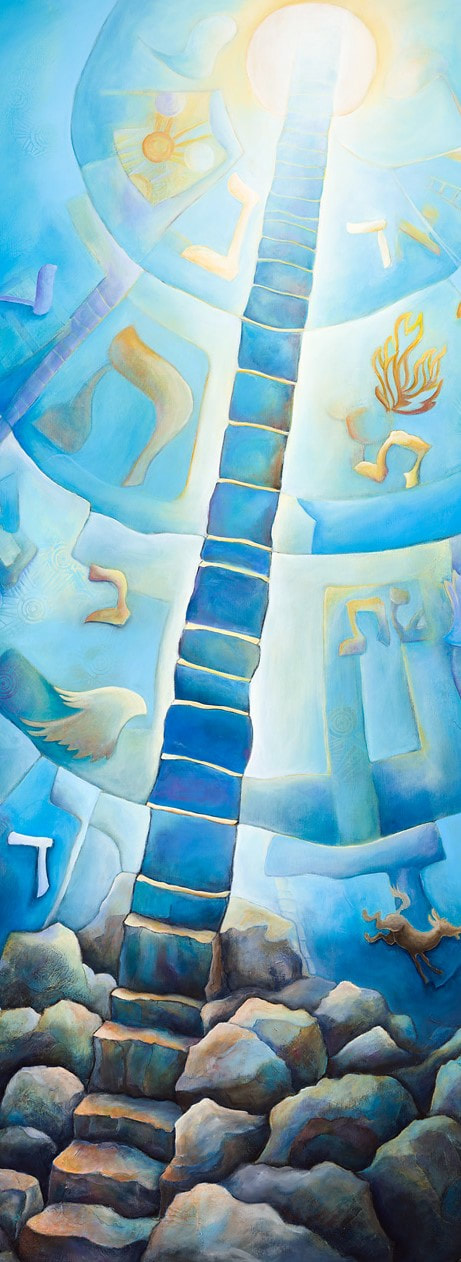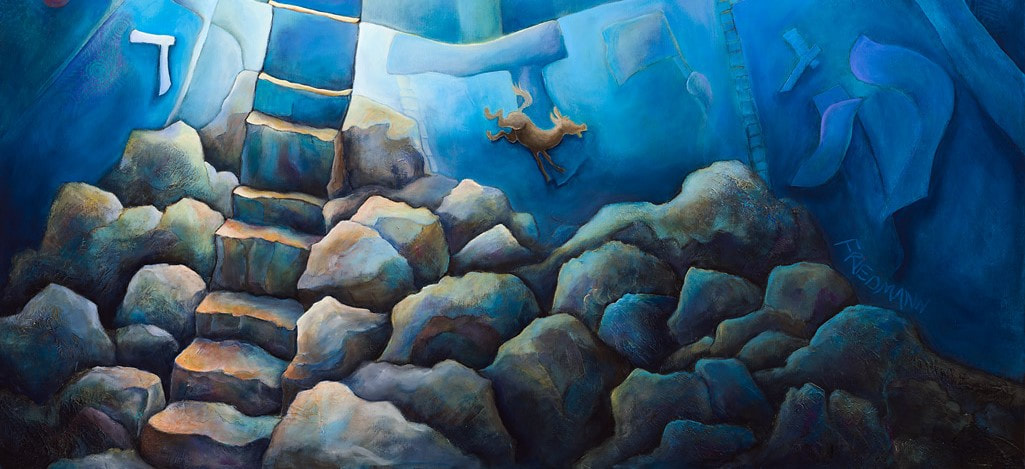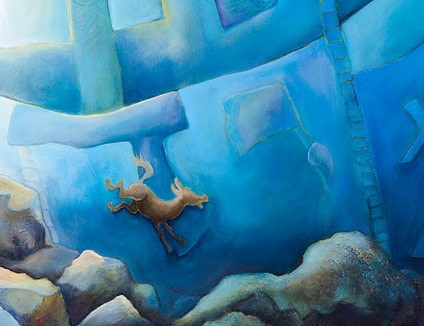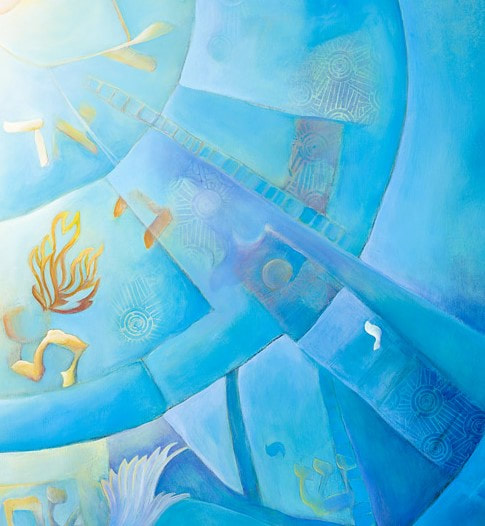- Home
-
Gallery
-
Landscape Collection
>
- Zen
- Summer Symphony
- Autumn at Hatley
- Peaceful Reflection
- Regal Lilies
- Wildflower Splash
- Garden Welcoming Committee
- Sunken Garden Pond
- Begonia Basket
- Duet
- Striking Hydrageas
- Tulips
- Apple Blossoms
- Tranquility
- Sunflower Dance
- Luminous Lilies
- Awe
- Drama at Myra Falls
- Sunny Days
- Poppy Flush
- Purple Irises
- Popping Poppies
- Bubbles
- Pure Joy
- Spring Welcome
- Fawn Lily Ballet
- Assembly of Giants
- Becher Shore
- Birch Silhouette
- Camas Mosaic
- Chesterman Sunset
- Humble Pathway
- Luminous Sky
- Windswept
- Marine & Aquatic Collection >
- Spiritual & Political Activism Collection >
- 12 Tribes Collection >
-
Landscape Collection
>
- Prints
- About
- Contact
Jacob's Ladder
The Zohar, a foundational text of Kabbalah, interprets Jacob's ladder as a metaphor for prayer, noting the identical numerological value of the Hebrew words for "ladder" and "voice" (136). This ladder symbolizes the journey from earthly existence to heightened consciousness, reaching the soul's heavenliness. The Midrash, cited in Yalkut Reuvani and Megaleh Amukot, elaborates that the ladder has four steps, representing the Kabbalistic Four Worlds, as explained by Rabbi Isaiah Horowitz (the Shelah).
Kabbalistic teachings contrast the philosophers' concept of three universes (earth, galaxy, and spiritual realm) with four existential paradigms: Action (Asiya), Formation (Yetzira), Creation (Beriya), and Intimacy (Atzilut). Rabbi Horowitz aligns these worlds with aspects of the ladder: Asiya with the ladder's earthly grounding, Yetzira and Beriya with angels ascending and descending, and Atzilut with God's presence.
Rabbi Isaac Luria (Arizal) connects the Morning Prayer's four sections with these worlds, symbolizing spiritual ascension. The prayer begins in Asiya, fostering internal growth, then moves to Yetzira, focusing on emotional restructuring. In Beriya, the worshipper embraces self-recreation, and in Atzilut, achieves divine intimacy.
The Kabbalah views personal growth as a lifelong journey of ethical and spiritual refinement. This process begins with the 'world of Action' (Asiya), addressing daily behaviors and habits. The 'world of Formation' (Yetzira) involves introspection and emotional realignment, while the 'world of Creation' (Beriya) empowers self-recreation, leading to the 'world of Intimacy' (Atzilut), where one experiences profound union with the divine.
In summary, the Kabbalistic interpretation of Jacob's ladder, as both prayer and a representation of the Four Worlds, symbolizes a daily spiritual journey, encompassing ethical conduct, emotional introspection, self-recreation, and ultimate divine intimacy. This concept is visually represented in Lesley Friedmann's acrylic painting, permanently displayed at Chabad Vancouver Island in Victoria, BC, Canada.
Kabbalistic teachings contrast the philosophers' concept of three universes (earth, galaxy, and spiritual realm) with four existential paradigms: Action (Asiya), Formation (Yetzira), Creation (Beriya), and Intimacy (Atzilut). Rabbi Horowitz aligns these worlds with aspects of the ladder: Asiya with the ladder's earthly grounding, Yetzira and Beriya with angels ascending and descending, and Atzilut with God's presence.
Rabbi Isaac Luria (Arizal) connects the Morning Prayer's four sections with these worlds, symbolizing spiritual ascension. The prayer begins in Asiya, fostering internal growth, then moves to Yetzira, focusing on emotional restructuring. In Beriya, the worshipper embraces self-recreation, and in Atzilut, achieves divine intimacy.
The Kabbalah views personal growth as a lifelong journey of ethical and spiritual refinement. This process begins with the 'world of Action' (Asiya), addressing daily behaviors and habits. The 'world of Formation' (Yetzira) involves introspection and emotional realignment, while the 'world of Creation' (Beriya) empowers self-recreation, leading to the 'world of Intimacy' (Atzilut), where one experiences profound union with the divine.
In summary, the Kabbalistic interpretation of Jacob's ladder, as both prayer and a representation of the Four Worlds, symbolizes a daily spiritual journey, encompassing ethical conduct, emotional introspection, self-recreation, and ultimate divine intimacy. This concept is visually represented in Lesley Friedmann's acrylic painting, permanently displayed at Chabad Vancouver Island in Victoria, BC, Canada.
© Lesley B. Friedmann, 2016. All rights reserved. No part of this website may be reproduced without prior permission by the owner.






